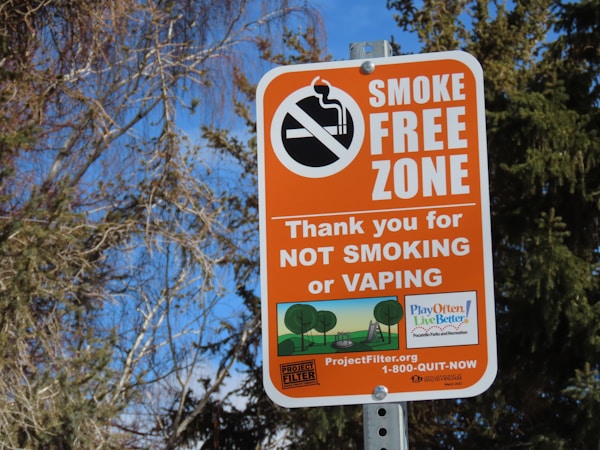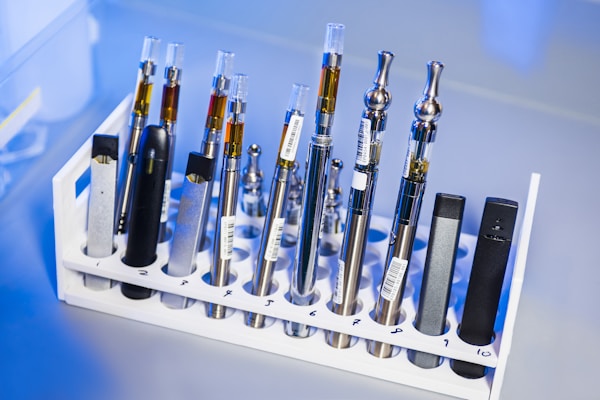
Learn more about Nicotine, Tobacco and Vaping.

Nicotine is a chemical produced by different plants, commonly from the nightshade family. Tobacco is one of the most popular examples of plants that produces nicotine.

Nicotine is highly addictive; its addictive property has been compared to that of opioids like heroin and morphine. Nicotine is one of the primary reasons cigarette users find it hard to quit smoking. It has an even greater impact on teenage brains that are vulnerable to addiction, and a big reason why teens are hooked on to E-cigarettes.

What do teens think is in their e-cigarettes? According to the National Institute of Drug Abuse (NIDA), “66% say just flavoring, 13.7% don’t know, 13.2% say nicotine, 5.8% say marijuana, and 1.3% say other. Manufacturers don’t have to report e-cig ingredients, so users don’t know what’s actually in them.”

“As simple as it looks, the cigarette is a highly engineered nicotine-delivery device. For instance, when tobacco researchers found that much of the nicotine in a cigarette wasn’t released when burned but rather remained chemically bound within the tobacco leaf, they began adding substances such as ammonia to cigarette tobacco to release more nicotine. Ammonia helps keep nicotine in its basic form, which is more readily vaporized by the intense heat of the burning cigarette than the acidic form. Most cigarettes for sale in the U.S. today contain 10 milligrams or more of nicotine. By inhaling smoke from a lighted cigarette, the average smoker takes in one to two milligrams of vaporized nicotine per cigarette.”

A cigarette, once lit, burns tobacco leaves and produces a thick smoke that is responsible for causing tar in your lungs. What an E-cigarette aimed to do was remove the tobacco element and heat a nicotine filled e-liquid to a controlled temperature so it doesn’t give out thick smoke, but an aerosol, commonly referred to as the “vapor”. However, the aerosol contains many chemicals that are present in the E-liquid itself, metals of the e-cigarette, as well as the battery and coils that are inside it. This aerosol is not only inhaled by the user, but is also exhaled out into the environment. Cigarettes have something called freebase nicotine which is relatively the purest form of nicotine. Nicotine salts, that are more commonly present in e-cigarettes today make it much easier our bodies body to inhale nicotine, especially large amounts of it, because it is not as volatile as freebase nicotine.
Some of the common teen misconceptions about vaping are: That vapes only contain flavoringThere is little to no nicotine in themThey are inhaling and exhaling water vaporThey are safer than cigarettes or alcoholIt is important to educate teens (and adults) about the facts. It is just as important to not overstate the facts or scare teens with false information.
Cig-a-likes: Usually for transitioning; mostly disposable
Vape Pens: Larger; higher tech; refillable, longer battery life
Vape Mods: “modification”; more powerful, advanced, and safe; controllable power setting, “Sub-ohm vaping”, e-liquid usually has a higher VG content, larger, more customizable
Pod-Based: Open and closed pod systems; usually used with nicotine salt e-liquid

The Illinois Youth Survey is a statewide survey administered to hundreds of schools around the state. This initiative is lead by the Center for Prevention Research and Development at the University of Illinois Urbana-Champaign. All county and state level data are available on their website. We have selected to highlight a few data points from the 2018 Non-Chicago Cook County data set which provides a good representation of the entire township.
NOTE:
1. The data is completely anonymous: The survey does not ask for any form of identification or question that might lead to the identity of the student. This is to ensure that students feel safe and answer questions honestly. It minimizes the chance of bias and inconsistent data.
2. The survey is standardized: This statewide survey is created by data professionals and undergoes a rigorous formation process that makes sure questions are clear, un-biased, and neutral among other things. Standardized surveys have a good chance of being both valid and reliable.
3. Correlation is not causation: We will often compare a data point with another. Their relationship may be indicative of a pattern or might be informative. Maybe when one data point increases, we notice that the other decreases. However, it is important to know that this correlation does not confirm or state that the increase in one is causing the decrease in the other or vice versa.
To view some basic level data for all substances visit our Data Highlights Page.

James Monsees and Adam Bowen came up with the idea of a pod-based product that used the heat not burn forumula, in 2005. Overtime, with more investors and ideas they become Pax Labs which launched JUUL. With a allegedly youth-oriented party in New York city, it garenered a lot of attention.
September 2019
Juul under investigation; major corporations. won't sell their products.

Vaping Associated Pulmonary Injury (VAPI)
(VAPI) also known as vaping-associated lung injury (VALI) or e-cigarette, or vaping, product use associated lung injury (E/VALI), is an umbrella term, used to describe lung diseases associated with the use of vaping products that can be severe and life-threatening.

“People with underlying health issues, such as heart or lung problems, may have increased risk for serious complications from Covid-19,” Michael Felberbaum, an FDA spokesman, said in an email Friday in response to questions from Bloomberg. “This includes people who smoke and/or vape tobacco or nicotine-containing products.” “E-cigarettes can damage lung cells,” Felberbaum said.